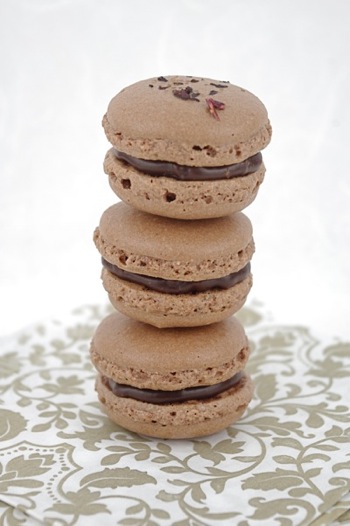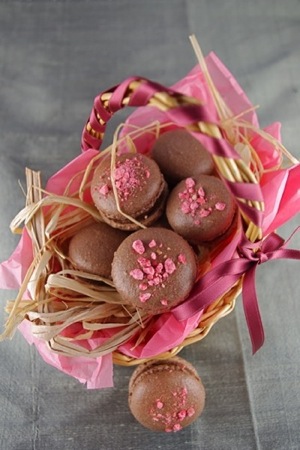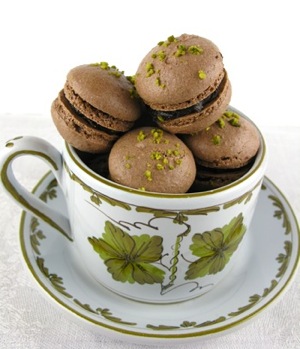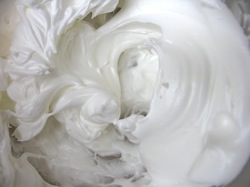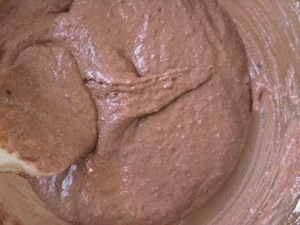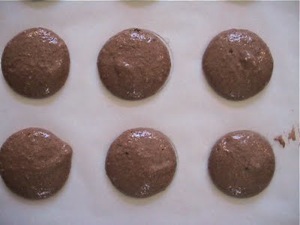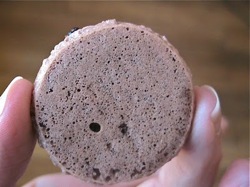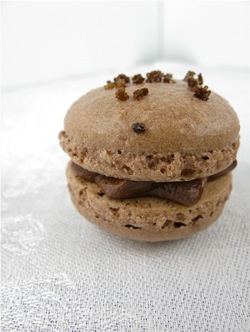
The time is once more upon us when we sit down and, pen and paper in hand, draw up that impossible list of New Year's Resolutions, that endless list of promises to ourselves, promises rarely kept. All of those heavy holiday meals and sweets must have made us delirious, intoxicated by one too many candy cane or marshmallow Santa, our brain softened by one too many holiday cartoon or sappy black & white film. Glancing over past lists, we shake our head in disbelief and wonder how we can, year after year, set the bar so high: stop smoking, lose 10 pounds, visit grandma every Sunday, never raise our voice to our children, eat healthier and start jogging. New Year's Resolutions are as ephemeral as that genie in the bottle, as fleeting as time itself. Yet here we go again.
This year, we should try and be a bit more reasonable. How about a few short term goals, one shot deals that are pleasurable rather than restrictive or uncomfortable. Is there a book that you have been meaning to read? Stitch up the hole in your old quilt? Send flowers to your mom or visit an old school chum? Take your spouse away on a much-needed date night or, better still, a romantic weekend à deux? Treat yourselves to these little pleasures, meet one small goal at a time and, before you know it, volunteering at a your child's school or coming home just a little earlier from work so you have more time with your family or even that Saturday morning jog won't seem that far out of your reach.
So let's tackle something that so many have been wanting to attempt for such a long time: French macarons. No, I am not suggesting that we slip on the winter boots and coat, climb in the car and go purchase an expensive box of these delicate little treats. Now, where would the challenge - or the fun - be in that? I know that the French macaron is as controversial and divisive as the cupcake; people either love them or hate them, are fascinated by them or scoff at their inexplicable popularity. But while the cupcake trend seems to be in rapid decline, can we say the same about the macaron? Shops seem to be popping up in cities all over Europe and the US, and pastry chefs are inventing newer and more creative flavor combinations every day. They have become so popular here in France that macarons are not only sold in pastry and chocolate shops, but made and sold by bread bakers in every boulangerie as well. Sweet, savory or even spicy, the flavors are endless and astonishing, the tiny simple shell of sugar, almonds and egg whites the perfect backdrop to almost any flavor combination. And as for home bakers, these are quite the challenge, our own little Mt. Everest to climb, and whether you love them or despise them, whether you think that they are the height of elegance and sophistication or simply another crazy food fad, the challenge itself is indisputable. As I stated in an earlier post, they are fragile, temperamental and tricky, a delicate balancing act in which so many conditions play a deciding role: perfect measurements, oven precision, the quality of the ingredients, outside temperature and humidity, the change in any one of which can wreak havoc on the results, leaving the anxious baker in front of disastrous results: flat, cracked or gluey blobs instead of the much desired perfectly formed, light-as-air shells. Not to mention the handling of a pastry (piping) bag.... Thus a successful, perfect tray of macarons leaves the home baker exhilarated and proud as if he or she has just achieved a stunning triumph and conquered the enemy!
Whenever someone asks my advice about starting on this great adventure and requests a recipe, I always tell them to start with chocolate macarons. These are my never-fail macs, the one recipe that turns out perfect macarons every single time I make them. Why? First of all, this recipe is made with simple French meringue, sugar beaten into egg whites, rather than Italian meringue, which requires cooked sugar, so this one is easier. And because the cocoa powder seems to act as a stabilizer; I'm not sure why, but it does. And even those who tend to stay away from macarons have a hard time resisting these. I mean, who doesn't love chocolate? Less cloying and difficult to eat than the chocolate truffle, more elegant than a brownie, they are rich in flavor, dense and chewy underneath a delicate crisp outside. Filled with a chocolate ganache, they stay fresh and perfect for several days, seeming only to get better and more chocolatey!
Making our own French macarons, those tender little bites of dense sweetness, a froth of meringue folded ever so carefully into snowy icing sugar and fragrant ground almonds and flavored as we please, seems to be considered one of the most daunting culinary adventures, right up there with homemade yeast bread and making one's own cheese! But careful attention and a bit of practice along with a recipe that works, and in no time at all you too can be enjoying fabulous macarons. Once you get the hang of this recipe, you can add flavors to personalize each batch, or use one of the intriguing varieties of flavored chocolates now available (chili-chocolate, mint-chocolate, orange-chocolate, blueberry-chocolate) to add extra zing and flavor to your ganache.
CHOCOLATE MACARONS with DARK CHOCOLATE GANACHE FILLING
7.2 oz (200 g) confectioner's/powdered sugar
4 oz (115 g) finely ground blanched almonds
3 large egg whites (about 4 oz/ 112 g)
1 oz (30 g) white granulated sugar
1 Tbs + 1 tsp (20 g) unsweetened cocoa powderSuggestions for a flavor change:
Replace half the ground almonds with ground unsalted pistachios or blanched hazelnuts
Replace 1 teaspoon cocoa powder with ½ - 1 teaspoon ground cinnamon
Add 1 teaspoon finely ground dried orange or lemon peel or dried fruit (not candied fruit)
Add a dash of cardamom, nutmeg or even fine sea salt
Replace 1 teaspoon cocoa powder with finely ground instant espresso
Replace half of the granulated sugar with flavored sugar, sifting out any solids
Prepare 2 large baking sheets. On 2 large pieces of white paper the size of your baking sheets, trace 1 to 1 ½-inch diameter circles (I used the wide end of my pastry tip) evenly spaced, leaving about ¾ - 1 inch between each circle. This will be your template to help you pipe even circles of batter onto the parchment paper. You will be able to reuse these endlessly. Place one paper on each baking sheet then cover with parchment paper. Set aside. Prepare a pastry bag with a plain tip. I use one with a ½-inch (1 ½-cm) opening.Sift the powdered sugar, the ground almonds and the cocoa powder (and spices, if adding) together into a large mixing bowl then gently whisk together until perfectly blended. Whizzing the ground almonds again in a processor or clean grinder will make them even finer. Set aside.
In a standing mixer or with a hand mixer, whip the egg whites for 30 seconds on low speed then increase speed to high and whip until the whites are foamy and no longer transparent. Gradually add the granulated sugar as you continue to whip the whites until you obtain a glossy meringue and all of the sugar has been beaten in. The meringue will be very stiff (turn the bowl upside down over your head and it shouldn't move) and be dense like marshmallow.
Gently but firmly fold the whipped whites into the powdered sugar/ground almonds/cocoa, using a silicon spatula or the equivalent, turning the bowl as you lift and fold, making sure you fold in all the dry ingredients completely. Once all the dry ingredients have been moistened, give the batter several firm turns to blend well. When the batter is ready to pipe, it should flow from the spatula like lava or a thick ribbon. To test to see if you have folded it enough, drop a small amount onto a clean plate and jiggle it slightly. The top should flatten, not remain in a point. If it doesn't flatten, give the batter a few more folds and test again. You can also fold the powdered mixture into the meringue if it is easier for you.
Fill your pastry bag with the batter. Pipe circles onto the parchment paper, using the traced circles on the template sheets to guide you, holding your pastry bag above each circle and piping into the center. If you have never done this before, it does take practice as the batter flows rather quickly. You must control the batter flow by gently squeezing the bag to push out about a teaspoon of batter then quickly release the pressure and then, in one quick movement, twist the bag up and away to cut off the flow.
DO NOT FORGET TO CAREFULLY REMOVE THE WHITE PAPER TEMPLATE FROM UNDERNEATH THE PARCHMENT PAPER. YOU DO NOT WANT THIS TEMPLATE TO GO IN THE OVEN!
Allow the macarons to sit out for 45 minutes to an hour. The top of each shell should form a "skin" (it will feel like it hardened a bit when gently touched and not stick to your skin).
Preheat your oven to 280°F (140°C).
Bake the shells for 15 - 25 minutes, depending on their size (when I touch macs that are not quite done, the top jiggles slightly as if there iss still a liquid batter between the top and the "feet" so I let it continue to bake another minute.) I turn the trays back to front a little more than halfway through the baking.
Remove the tray from the oven and immediately slide the parchment paper with the shells off of the hot baking sheet and onto a surface, table or countertop. Allow to cool completely before sliding the shells very gently off of the parchment by slipping a metal cake spatula under the shell as you lift it up or by slowly peeling the parchment paper from the back of the shells. Be careful or the center of the shell risks sticking to the parchment.
When the macaron shells are cool, pair the shells up evenly, each with a partner of equivalent shape and size. Pipe a dollop, about a teaspoon, of ganache filling onto half of the shells, the bottom shell in each pair. Carefully sandwich the shells together.
CHOCOLATE GANACHE
Prepare the ganache before making the macarons as it will take a while for it to thicken to piping consistency. You can also prepare it ahead of time and/or cool/thicken it in the refrigerator.
½ cup (125 ml) heavy cream
¾ cup (3.6 oz/100 g) bittersweet or semisweet dark chocolate ** When making ganache with milk chocolate, use equal quantities chocolate and cream
Chop the chocolate and put in an appropriately sized pyrex (heatproof) bowl. Heat the cream in a saucepan gently until it comes just to the boil. Pour the cream over the chopped chocolate and stir until all of the chocolate is completely melted and the mixture is smooth and luxurious. Allow to cool to room temperature, stirring occasionally. It should thicken to a spreading/piping consistency (so it won't run off the shells). If you need to, speed up the process by placing in the refrigerator until desired spreading/piping consistency, stirring occasionally. If you are in a rush simply begin with about 10 grams more chocolate.
Jamie Schler lives, eats and writes in France. To read more of her work visit Life's a Feast.
